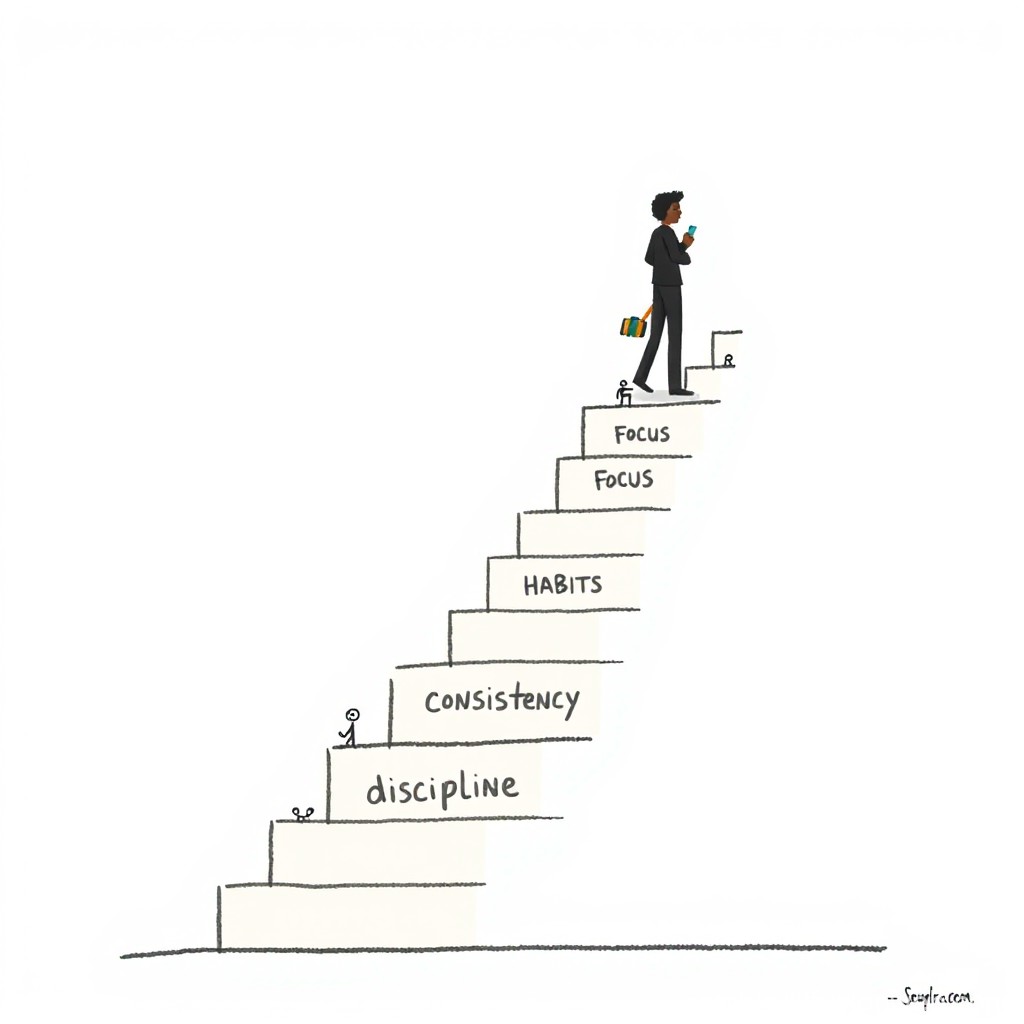ऑनलाइन दूसरों से तुलना करना कैसे बंद करें
परिचय
ईर्ष्या और तुलना इंसान की स्वाभाविक भावनाएँ हैं। यह अक्सर आत्म-मूल्यांकन का एक तरीका होती हैं — जिससे हम यह समझने की कोशिश करते हैं कि हम जीवन में कहाँ खड़े हैं। लेकिन सोशल मीडिया के आगमन के साथ यह प्रवृत्ति और तेज़ हो गई है। आज हम कुछ सेकंड में सैकड़ों या हज़ारों लोगों से अपनी तुलना कर सकते हैं — वो भी अपने बिस्तर पर बैठे हुए।
वेब की असीमित पहुँच और मान्यता पाने की हमारी स्वाभाविक इच्छा ने एक शक्तिशाली मिश्रण बना दिया है। चमकती त्वचा, सपनों जैसी छुट्टियाँ, शानदार जीवनशैली या परफेक्ट रिश्तों की सजी-संवरी तस्वीरें हमें अपने मूल्य पर संदेह करने पर मजबूर कर देती हैं। हम भूल जाते हैं कि ऑनलाइन दिखाई देने वाली ज़िंदगी सिर्फ़ “हाइलाइट रील” होती है — असल ज़िंदगी नहीं।
दूसरों की इस आदर्शीकृत छवि को लगातार देखने से हमारी वास्तविकता धुंधली पड़ जाती है और आत्म-सम्मान धीरे-धीरे कमज़ोर होता जाता है।
हाइलाइट रील बनाम वास्तविक जीवन
कोई भी अपनी असफलताओं, बिखरे हुए घर या उदास पलों की तस्वीरें साझा नहीं करता। सोशल मीडिया पर जो दिखता है, वह लोगों की ज़िंदगी का संपादित और फ़िल्टर किया हुआ हिस्सा होता है — यानी उनका सबसे अच्छा रूप।
लेकिन जब हम स्क्रॉल करते हैं, तो अक्सर यह सच्चाई भूल जाते हैं। “लाइक्स”, “कॉमेंट्स” और “शेयर” अब एक नई तरह का मूल्यांकन बन गए हैं — जैसे किसी की आत्म-मूल्य की डिजिटल माप। जब दूसरों की पोस्ट पर ज़्यादा एंगेजमेंट मिलता है, तो हम अपने मूल्य पर सवाल उठाने लगते हैं। समय के साथ, यह तुलना हमारे आत्मविश्वास को कम कर देती है और हमारी पहचान को धुंधला कर देती है।
बदलते रोल मॉडल्स
जब हम लगातार इन “आदर्श” तस्वीरों को देखते हैं, तो हमारी सफलता और सुंदरता की परिभाषाएँ बदलने लगती हैं। बिना जाने, हम उन लोगों को आदर्श मानने लगते हैं जो अवास्तविक और कृत्रिम मानकों का प्रतिनिधित्व करते हैं।
ये नए रोल मॉडल ऐसे मानक तय करते हैं जिन्हें पाना लगभग असंभव होता है — और यह असंतोष, चिंता और मानसिक थकान को जन्म देता है।
इस तरह हम किसी और की खुशी के पीछे भागने लगते हैं और अपनी ही यात्रा की शांति और आनंद खो देते हैं।
तुलना का मानसिक जाल
तुलना देखने में हानिरहित लग सकती है, लेकिन इसके भावनात्मक परिणाम गहरे हो सकते हैं। धीरे-धीरे हीनभावना मन में घर करने लगती है, आत्मविश्वास और आत्म-सम्मान कम होता जाता है।
इसके साथ ही जलन और नाराज़गी जैसी भावनाएँ पनपने लगती हैं — न सिर्फ़ अजनबियों के प्रति बल्कि अपने प्रियजनों के लिए भी।
अगर यह स्थिति लंबे समय तक बनी रहे तो यह व्यक्ति को अकेलेपन, चिंता या अवसाद की ओर ले जा सकती है।
इसलिए ज़रूरी है कि सोशल मीडिया को छोड़ने की नहीं, बल्कि उसे सजगता और उद्देश्यपूर्ण सोच के साथ उपयोग करने की कला सीखी जाए।
ऑनलाइन दूसरों से तुलना करना कैसे बंद करें
1. आत्म-जागरूकता विकसित करें
ध्यान दें कि सोशल मीडिया आपके मूड को कैसे प्रभावित करता है। क्या कुछ प्रोफाइल या पेज आपको असहज या हीन महसूस कराते हैं? इन ट्रिगर्स को पहचानना ही नियंत्रण की पहली सीढ़ी है।
2. तस्वीर के पीछे की सच्चाई समझें
एक फोटो सिर्फ़ एक पल दिखाती है, पूरी कहानी नहीं। बहुत कम लोग अपने संघर्षों या मुश्किल पलों को साझा करते हैं। इसलिए सच्चाई को समझें, दिखावे को नहीं।
3. विज़न बोर्ड बनाएं
एक विज़न बोर्ड आपको अपने लक्ष्यों पर केंद्रित रखता है। यह आपको याद दिलाता है कि आपकी यात्रा दूसरों से नहीं, आपके खुद के सपनों से जुड़ी है।
4. अपने सोशल मीडिया फीड को सजगता से चुनें
सिर्फ़ वही पेज और लोग फॉलो करें जो आपको प्रेरित करें, शिक्षित करें या सकारात्मक ऊर्जा दें। जो अकाउंट आपको असंतोष या नकारात्मकता की ओर ले जाएँ, उनसे दूरी बनाएं।
5. स्क्रीन टाइम सीमित करें
सोशल मीडिया के साथ स्वस्थ सीमाएँ तय करें। वास्तविक जीवन में समय बिताएँ — दोस्तों से मिलें, नए शौक अपनाएँ या प्रकृति का आनंद लें। असली जीवन हमेशा वर्चुअल दुनिया से अधिक सुंदर होता है।
6. अपनी प्रगति को पहचानें
दूसरों से नहीं, बल्कि अपनी कल की तुलना आज से करें। अपनी प्रगति पर ध्यान देना आपको सकारात्मक दृष्टिकोण देता है।
7. कृतज्ञता का अभ्यास करें
जो आपके पास है, उसके लिए आभारी रहें। यह सोच आपको संतोष देती है और तुलना की भावना को कम करती है।
कृतज्ञता से आप कमी नहीं, बल्कि जीवन की समृद्धि देखना सीखते हैं।
8. खुद से दयालु बनें
खुद से प्यार भरे शब्द कहें — “मैं अपनी पूरी कोशिश कर रहा/रही हूँ, और यह काफी है।”
यह विश्वास रखें कि आपकी यात्रा का समय और दिशा बिल्कुल सही है।
9. उद्देश्य के साथ सोशल मीडिया का उपयोग करें
सोशल मीडिया को साधन की तरह इस्तेमाल करें, दर्पण की तरह नहीं। इसका उपयोग सीखने, जुड़ने और प्रेरित होने के लिए करें — तुलना करने के लिए नहीं।
खुद की देखभाल करें (Nurture Yourself)
आत्म-प्रेम तुलना का सबसे प्रभावी इलाज है। जब आप खुद की देखभाल करते हैं — मानसिक, शारीरिक और भावनात्मक रूप से — तो तुलना का असर अपने आप कम हो जाता है।
ऐसे काम करें जो आपको आत्मविश्वासी और मजबूत महसूस कराएँ। अपनी कमियों को बिना शर्म के स्वीकार करें — क्योंकि वही आपको इंसान बनाती हैं।
जब आप खुद को पूरी तरह स्वीकार करते हैं, तो आप भीतर से और अधिक स्थिर और संतुलित बनते हैं।
निष्कर्ष
तालाब में बहुत-सी मछलियाँ होती हैं, लेकिन आप हर मछली का पीछा नहीं करते। समझदारी यही है कि आप अपनी दिशा खुद चुनें।
याद रखें — आप किसी से प्रतिस्पर्धा में नहीं हैं। आपकी यात्रा आपकी अपनी है, आपके उद्देश्य और गति के अनुसार।
कोई फ़िल्टर, फ़ॉलोअर या क्यूरेटेड फ़ीड आपकी असली कीमत नहीं तय कर सकता।
आप जैसे हैं, वैसे ही पर्याप्त हैं — संपूर्ण, अद्वितीय और मूल्यवान।
दूसरों की “रील लाइफ” की तुलना छोड़ें, अपनी “रियल लाइफ” को अपनाएँ।
क्योंकि असली खुशी लाइक्स में नहीं, खुद को पसंद करने में है।




